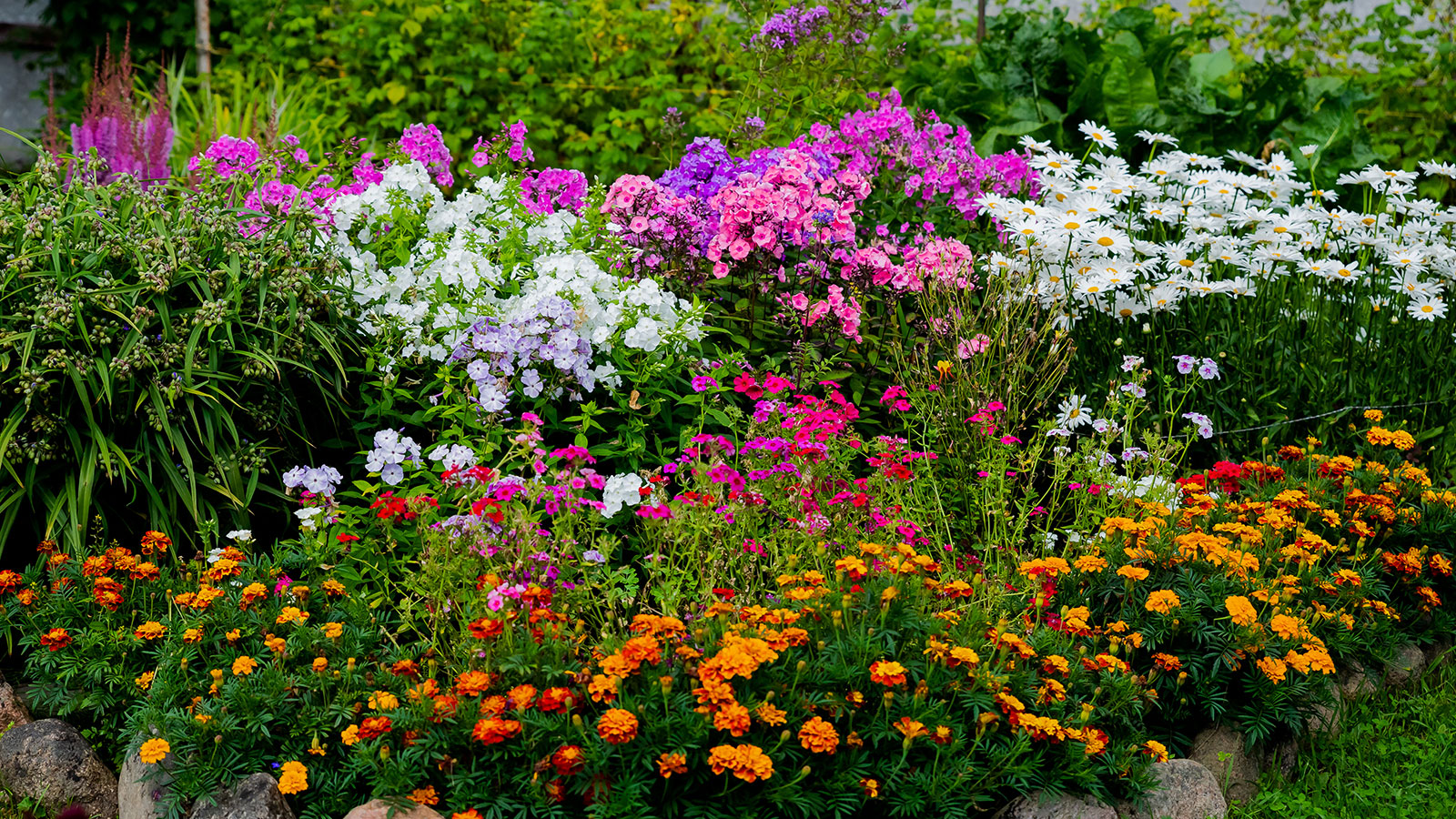
One of the most important principles of gardening is to feed your soil so it can feed your plants. Knowing how to improve garden soil so it's up to the task of providing your plants with the nutrients they need is key.
We all have troublesome areas of our yard where plants struggle to grow and it can be incredibly frustrating to keep throwing time and money, in the form of plant fertilizers, at plants and never really seeing them thrive.
Whatever your soil type, improving it to get your best ever plants is remarkably easy, and we are here to show you how to do it. Although this is a task that is usually done in spring and the fall, there's no reason why you can't start preparing for the task in summer too.
The 5 best ways to improve your garden soil
Follow our expert tips below to improve your soil health and you will have a flourishing yard that’s full of color and healthy plants all year round.
1. Use homemade compost
Well-rotted homemade compost is one of the best soil conditioners, adding nutrients and beneficial microbes, opening up heavy clay and improving the retention of moisture and nutrients in thin, sandy soil.
It can either be dug in or used as a type of mulch, layered on the soil to be broken down by the weather, beneficial microbes and worms.
Compost is made by mixing woody and ‘green’ materials in either a composter, which are easy to make, a plastic compost bin like this 80 gallon one by F2C on Amazon, or a compost tumbler such as this handy dual chamber compost tumbler, also on Amazon.
The woody materials can include garden prunings, shredded cardboard and paper, while the green ingredients incorporate raw kitchen fruit and vegetable peelings, soft green garden waste such as dead plants, deadheaded stems, dead vase arrangements and grass clippings from mowing the lawn.
One very on-trend way of improving your composting process is 'peecycling' or using male urine as a compost ingredient. It needs to be fresh and come straight from the source and is a valuable source of nitrogen, one of the three most important plant ingredients found in fertilizers and explained on plant fertilizer labels.
Never add cooked foods, pet waste, diseased plant material nor weeds with ripe seedheads to your compost heap.
Turn it regularly with a long-handled garden garden fork, like this sturdy fork from Spear and Jackson on Amazon, so that all the ingredients are well combined, and it should take around six months to rot down into a rich, brown, crumbly loam.
You can speed things up by making sure the heap isn’t allowed to dry out in summer and is kept warm in winter by covering it with black plastic or Hessian.
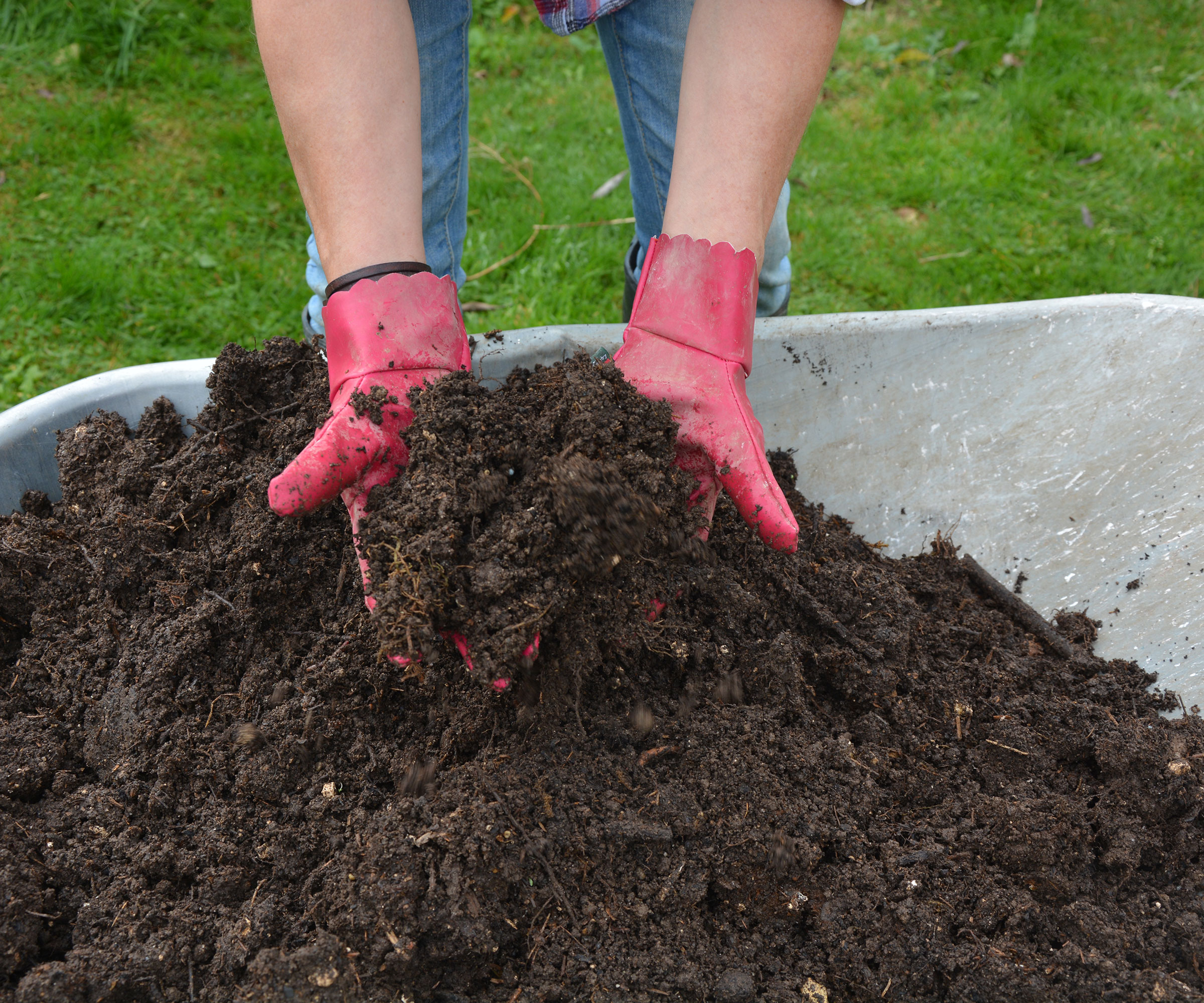
2. Spread farmyard manure
Farmyard manure is another excellent way to improve garden soil, plus it's one of the best fertilizers for a vegetable garden and a good way to add phosphorus to the soil.
Manure helps the soil by releasing nutrients as it breaks down and is also valuable to adding body to poor soils.
It is important that you let it rot down for several months before using it because fresh manure contains high levels of nitrogen that will burn young plants.
So store it somewhere out of the way, like at the bottom of your yard or behind your shed, for a few months and don’t use it until it has completely broken down. Alternatively, add it to your compost and heap and mix it well with the other ingredients.
The best manure to use is cow, horse, chicken, sheep or goat, though the droppings and sawdust created when keeping pet rabbits can also be used but again, add them to the compost heap first. Never use the droppings of cats or dogs.
If you live near a farm you may be able to buy bags of manure cheaply at the gate, but failing that it is widely available, already composted down, like this Michigan Peat Cow Compost and Manure on Amazon.
Chicken manure pellets, such as Fancy Chicken pellets available on Amazon, are widely available and are an excellent way of improving soil in small areas. Fork them into the soil and water the area a few weeks before planting and your plants should thrive.
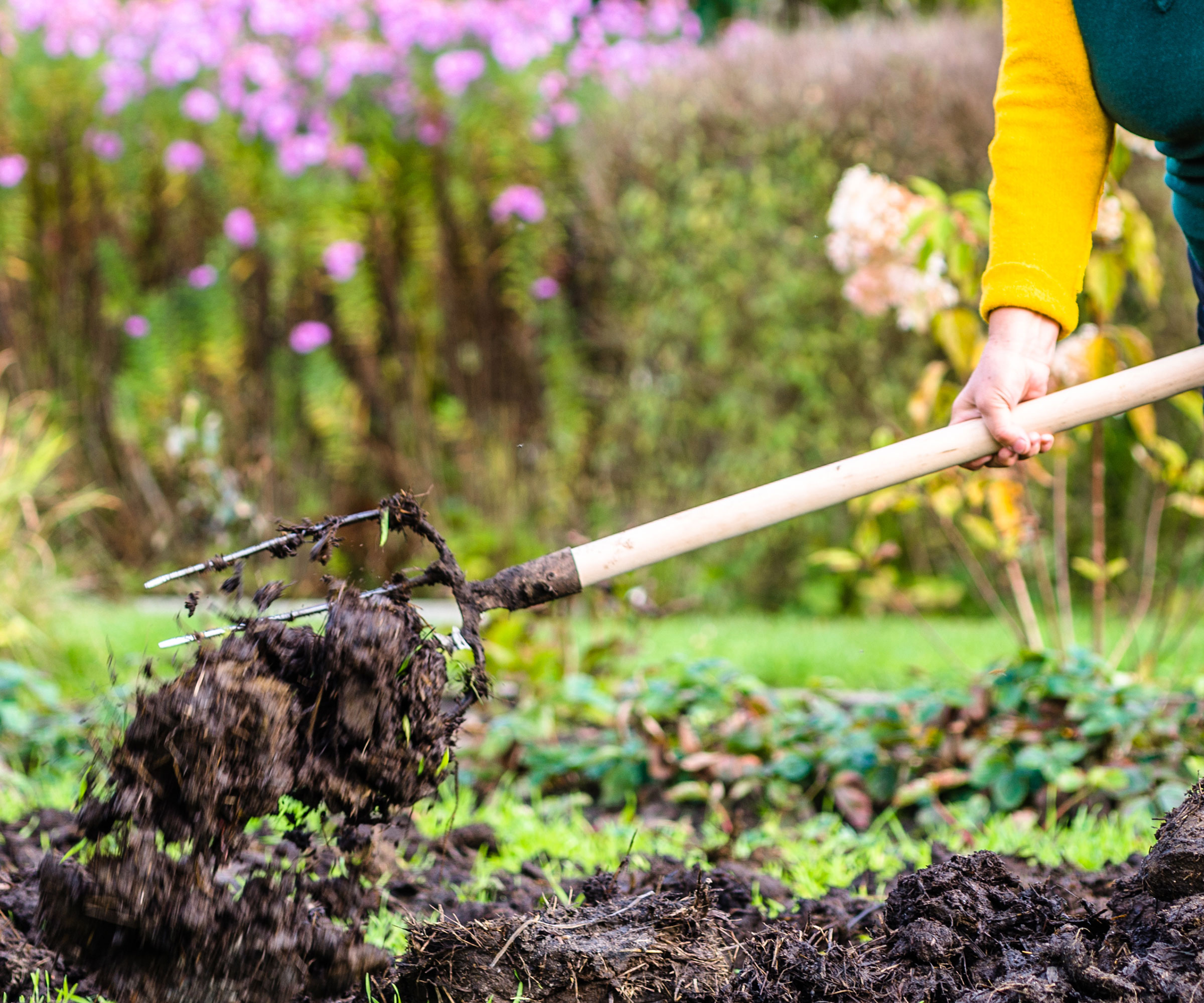
3. Add horticultural grit
Heavy clay soils come with all sorts of problems. Although they are richer in nutrients than thinner soils, and retain water well making them a brilliant medium for growing trees, they can get waterlogged and freeze solid, becoming unworkable when conditions are very wet or cold.
This makes it impossible to garden for a large chunk of the year, and one of the best ways to reverse this is to dig in quantities of small-scale horticultural grit, soil amendment or pea gravel.
You can either use it on its own or mix it with well-rotted compost or manure (generically called ‘organic matter’) to open up the clay, improving its drainage capabilities and allowing more oxygen to move through the soil and around plant roots.
There are plenty of trees that will grow well on clay soils if you do have this type of soil in your backyard too.
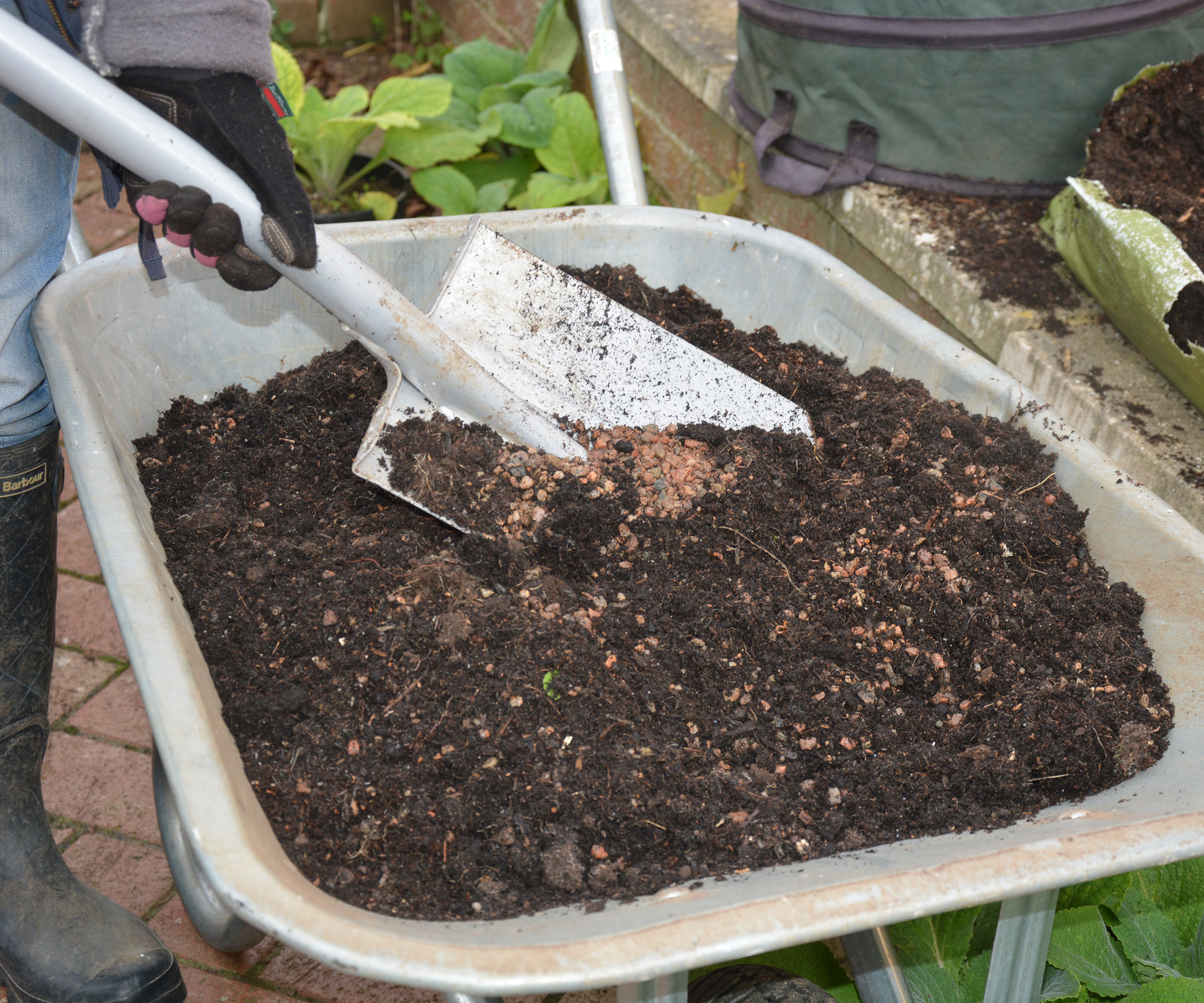
4. Re-use old container compost
At the end of the growing season, think twice about throwing away the old potting soil from grow bags and patio planters.
While the plants that grew in them may have used up the nutrients contained within, you can reuse potting soil as a conditioner to help improve garden soil in your beds and borders.
Make sure you remove all the old plant material and any pests you find, and don’t use it if there were any signs of disease on the plants they contained.
Then either add it to your compost heap to help enrich the mix, or dig it straight into the soil in your flower beds and borders, where it will add bulk to thin soils and lighten heavy ones.
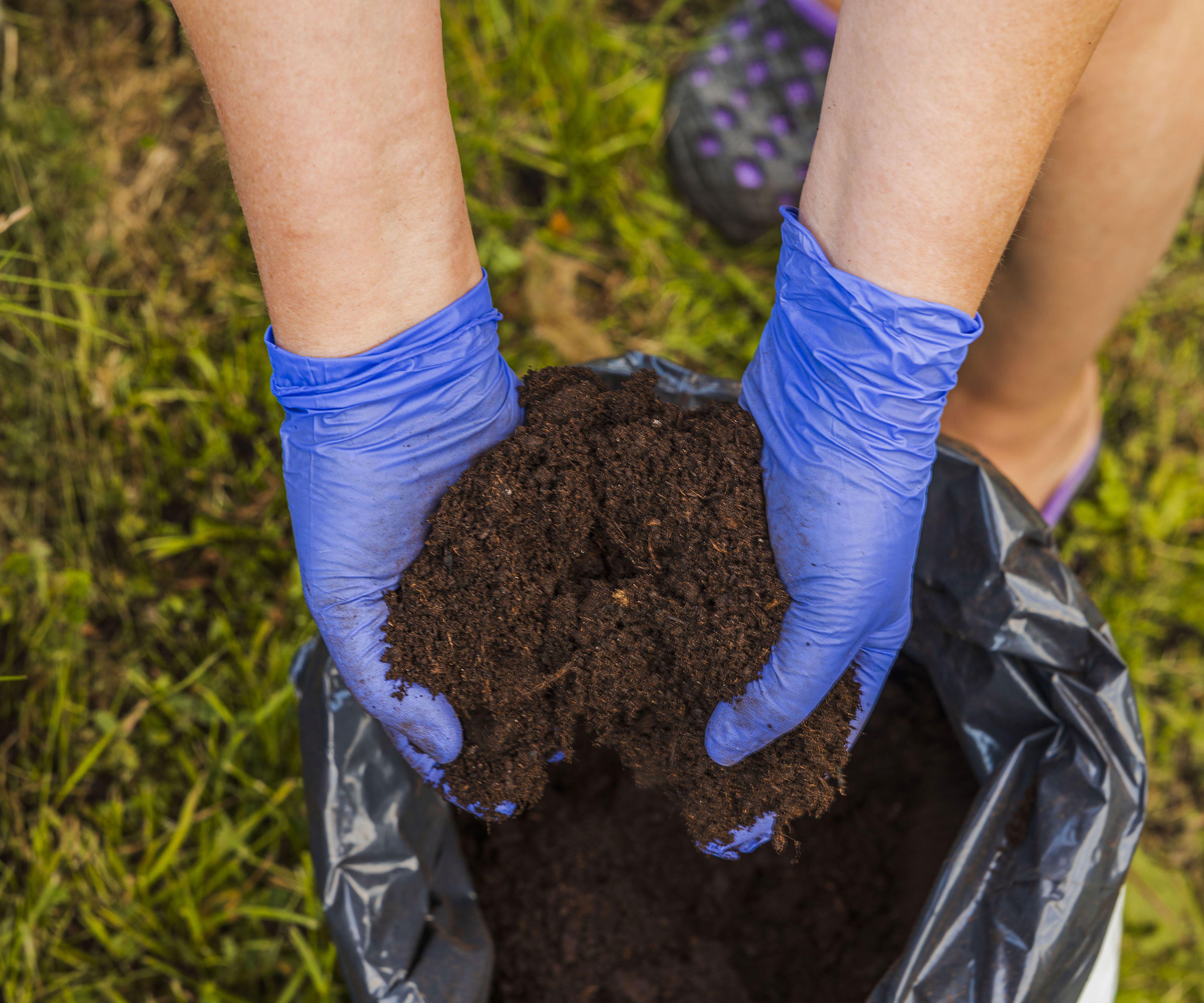
5. Grow green manure
The growing season can seriously deplete soils and they can be further damaged by winter weather and one of the best ways to replenish them and prevent further damage is to sow green manures, or cover crops.
These are packets of fast-growing seeds, often members of the pea family (legumes) that are readily available from most garden centres and online, such as this no-till cover crop seed mix from Amazon.
They fix nitrogen (essential for strong stems and foliage) back into the soil through their roots. The roots also help open up the structure of the soil, which is helpful if you garden on heavy clay.
The top growth is allowed to flower and mature and is then dug back into the soil where it rots down releasing more goodness.
The most popular varieties for green manure are clovers, legumes and rye grasses.
Some can be left to grow for a year or more, but most work just as well if sown onto prepared soil in fall and cut back and dug in towards the end of winter.
As well as boosting the soil, green manures also help to get rid of weeds and prevent erosion and compaction by wind and rain.
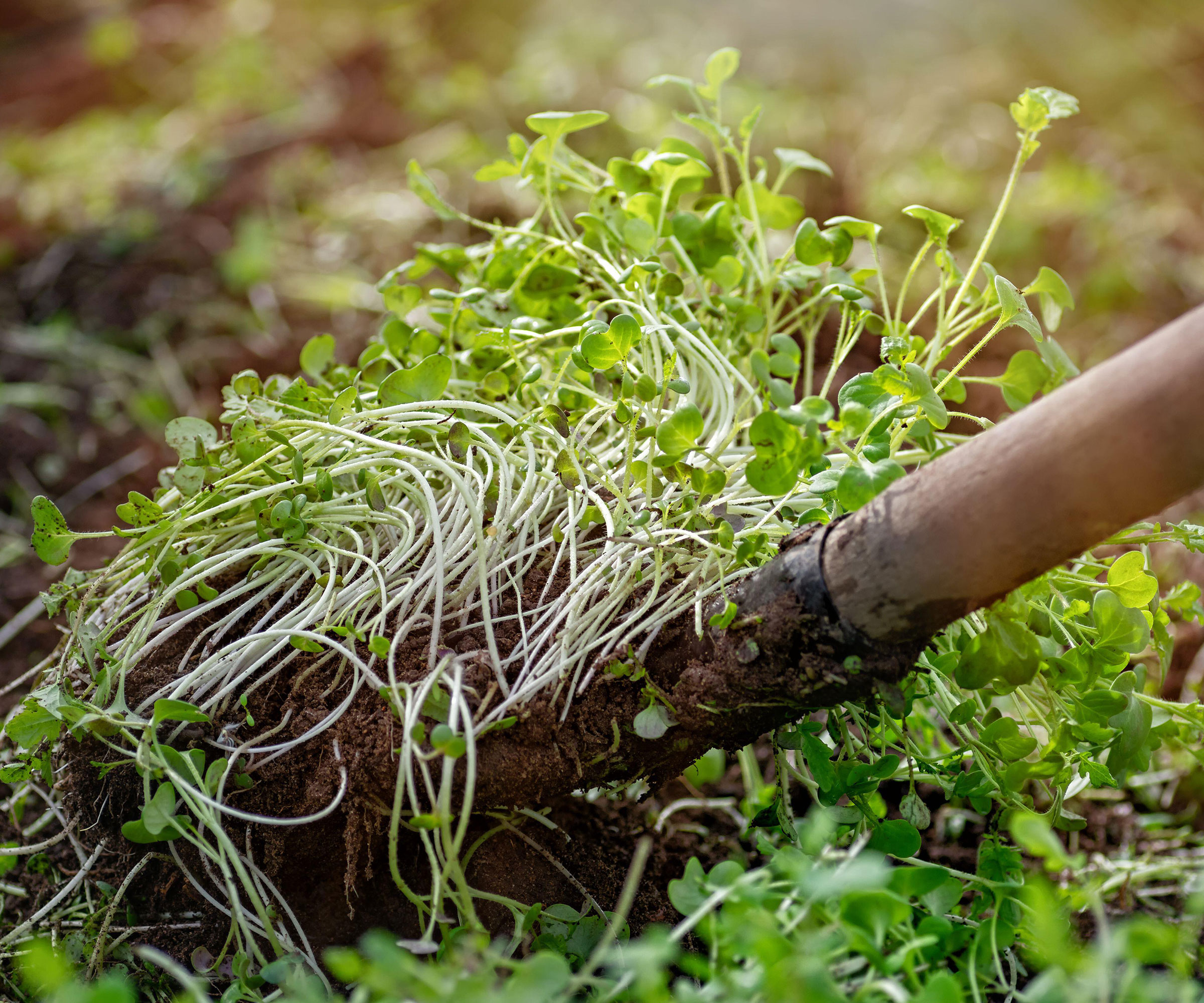
Once you have improved your soil, keep it healthy by using the no dig system of soil maintenance, one of the best ways to create an eco-friendly garden.
It is exactly as it says – instead of digging and forking your soil, you simply add more well rotted organic material (compost, manure, leaf mulch) to existing beds, making it perfect for kitchen garden ideas and if you are planning a cut flower garden.
The soil microbes and invertebrates such as worms help break down the soil and keep it healthy and it is easier to plant through the rich, crumbly loam that the no-dig system creates.
Even weeding is easier – either pull them out or chop down weed seedlings with a hoe and let them decompose on the soil, further enriching it.







